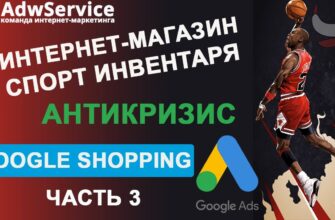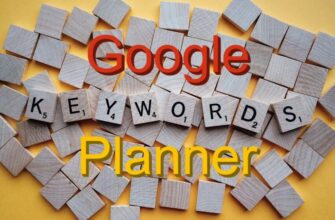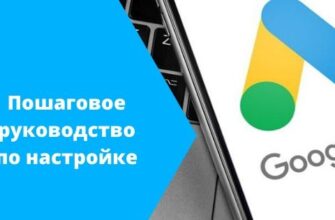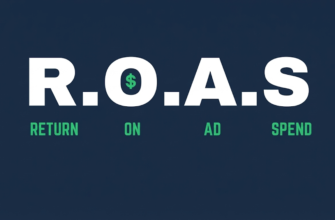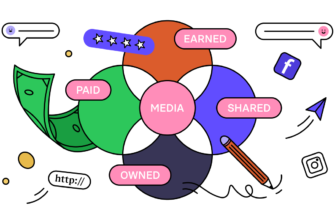- Why is keyword grouping necessary in contextual advertising?
- The main ways to group key phrases for Google Ads
- Morphological grouping of key queries
- Semantic clustering
- Association by intention
- Grouping by sales funnel
- Grouping by device type
- How to divide keywords into groups?
- What mistakes are often made when grouping search queries?
Contextual advertising is an effective way to promote a resource on the Internet. It is one of the most useful inventions by search engines. Instead of showing users useless ads, search engines only display results that are directly related to the query. This increases search accuracy and user conversion.
Every well-designed resource has a semantic core.
Important! Semantics is a scientific field that studies the meaning of each unit of language. The semantic or meaning core of a website or advertising campaign helps determine the focus of the resource and its target audience.
Selecting key phrases is the basis of the process of compiling a semantic core before launching contextual advertising. Its accuracy determines the accuracy of reaching the target audience and the results of the campaign. This process is usually divided into three stages:
How many calls and sales will I get by ordering contextual advertising from you?
I need to calculate the conversion of my website Describe
the task
in the application
Calculate potential ad revenue Google
contextual advertising calculator
- Collecting all kinds of phrases related to the subject of advertising (it is important to collect as many as possible);
- Cleaning up unused or ineffective items;
- Clustering of remaining phrases.
Definition! Clustering is the process of identifying groups of objects with similar properties and structure from an initial set.
In other words, clustering is the process of grouping keywords for contextual advertising. As a result, it becomes possible to perform an accurate analysis of the results of a specific advertising campaign.
Why is keyword grouping necessary in contextual advertising?

- Ad relevance increases. Key queries grouped together help tailor ad display to phrases in a specific cluster. This way, each cluster receives a separate ad with its own call to action.
- A/B testing. These tests help you choose the most effective option from several alternatives. The total traffic of the website is divided between several landing pages with different key queries. As a result, the most effective advertising channel is selected.
- Accurate definition of search queries. By analyzing the grouping of key phrases, you can determine relevant search queries for an advertising campaign before it launches, thereby saving a lot of money.
- Grouping phrases with similar behavior makes it easier to analyze statistics. Users within the same cluster exhibit similar behavior across different key queries. This axiom helps to analyze results more quickly and accurately. For example, Google AdWords offers convenient tools for group analysis.
- Convenient management of advertising campaigns is achieved by reducing their number without losing effectiveness. Often, a positive side effect is a reduction in the cost of running advertising campaigns within a single website.
- Eliminating the cannibalization effect. Often, competing pages appear within a single resource, hindering conversion by competing for traffic. Properly selected groups of key phrases will help you create a content plan, develop an effective landing page, and avoid duplication. This measure leads to an increase in conversion.
The main ways to group key phrases for Google Ads

Keyword grouping for Google Ads and other services can be done in different ways. Some can be fully automated, while others can only be done manually (resulting in groups that are compiled with maximum accuracy). Each specialist decides for themselves how to perform clustering. Usually, the method depends on the goals of the advertising campaign. The result of this work will always be several lists with sets of keywords.
Morphological grouping of key queries
The simplest way to select key queries is to collect them based on morphological characteristics.
In simple terms, it is the grouping of words with the same root into one category.
For example, insurance services, insurance, insurance services, etc.
Due to its simplicity, it is easy to automate. There are services on the internet that can help you quickly group the necessary queries, remove prepositions, and prepare them for insertion into advertising accounts.
Semantic clustering
This is an improved morphological grouping. Here, keywords and phrases are grouped according to their semantic meaning (using synonyms).
For example, smartphone repair, smartphone repair, smartphone restoration, etc.
Automatic algorithms perform this selection and grouping less effectively. Automatic services assist with the primary work. However, the results must be manually verified afterward. Often, during the manual adjustment process, new queries are recorded or unnecessary ones are deleted.
The best tools are those that allow you to manually enter synonyms for a specific query before selecting key phrases.
Association by intention
User intent determines conversion. Someone who comes to study information is not yet a buyer. Conversely, if you make a buyer search for a product for a long time or bombard them with unnecessary questions, they will leave.
How many calls and sales will I get by ordering contextual advertising from you?
I need to calculate the conversion of my website Describe
the task
in the application
Calculate potential ad revenue Google
contextual advertising calculator
A common mistake that causes the loss of most customers is directing the target buyer to a page where they cannot quickly place an order. After 15 seconds, the user leaves.
Example of query grouping:
- How to apply a protective glass screen protector, apply a protective glass screen protector video, apply glass to the screen yourself, etc.
- Buy a protective glass for your smartphone, order a screen protector, purchase glass for your phone, etc.
The first group consists of informational queries, where the user is searching for information and does not intend to make a purchase. The second group consists of transactional queries. When setting up contextual advertising for a business (services or goods), transactional queries will be of most interest, as they will generate the majority of conversions.
Grouping by sales funnel
A sales funnel is a series of precisely defined stages for each product that a user goes through before making a purchase. Describing the funnel, following it, and measuring results for adjustment is the basic rule for every internet marketer. This is because communication with the user requires separate, clear actions at each stage.
For example, a potential buyer is looking for a multicooker. Based on the queries they enter, you can understand what stage of the funnel they are at:
- Why do you need a multicooker, what to cook in a multicooker, differences between multicookers and steamers, etc.;
- How to choose a multicooker, the 10 best multicookers, multicooker specifications, etc.;
- Buy a multicooker, order a multicooker with delivery, etc.
To get a user to make a purchase, you need to give them specific information and separate triggers to move on to the next stage at each stage. Today, there are no services that allow you to automate this method. However, it is the most effective when selling goods (especially expensive ones).
Grouping by device type
Although the system automatically adapts the appearance of ads to different devices, users in certain niches may behave differently depending on the gadget they use to search.
If, when analyzing data, you see a significant difference in key metrics (CTR, CVR, and CPA) for smartphones and PCs, it makes sense to start separating ad groups based on this criterion. This will allow you to:
- Adapt texts to the specifics of the device. For example, in the mobile version, emphasize the ability to call the company directly from the search results.
- Manage bids more effectively. If a certain group of keywords generates high conversion rates on smartphones, you can specifically increase bids for them in your mobile campaign without overpaying for desktop traffic.
How to divide keywords into groups?
The most convenient way to divide key phrases into groups is to go from general phrases to more specific ones (or from high-frequency queries to low-frequency ones). It is much easier to divide the semantic core into large clusters that describe the general essence of the product or service. Then delve into the details of each cluster.

On sales websites, keywords in AdWords are usually grouped by product category (household appliances, computers and accessories, power tools, etc.).
In the service sector, services are usually grouped together (dental prosthetics, veneer installation, caries treatment, tooth extraction, etc.).
When several initial groups are ready, it is necessary to go further. The initial group is divided into sub-clusters, in which groups of queries are collected and grouped. For example, for technology stores, computer equipment is selected (laptops, peripherals and components for computers, displays, motherboards, sound and other components). Services can also be made more specific (window cleaning in apartments, window cleaning in offices, window cleaning after renovation, and so on).
The optimal option is to combine artificially generated semantics with manual selection. Often, the following combinations work well for both the trade and service sectors:
- Brand and object;
- Object and characteristics;
- Object with a toponym;
- Object with transactional add-ons.
In conclusion, we would like to note that the correct selection of key phrases is the key to maximum effectiveness of contextual advertising with minimal advertising campaign costs.
What mistakes are often made when grouping search queries?
Problems with grouping keywords can undermine even the most effective campaign optimization efforts. Advertisers most often make the following mistakes:
- Creating overly broad groups. When a large number of loosely related keywords are combined into a single group, this inevitably leads to poor relevance for a specific query. As a result, CTR drops and the cost per click increases. The best solution is to divide large groups into smaller ones that are grouped by topic.
- They do not take search intent into account. Users who are looking for information on a topic and those who are ready to make a purchase have completely different search goals. By mixing informational and transactional queries when creating ads, you will not be able to satisfy either group.
- Poor detail in clustering. Even within a narrow topic, you can find queries for which you need to create a separate ad group. This allows you to offer users even more relevant ads and direct them to the page that best matches their query.
- Changes are rarely made to campaigns. User behavior, market conditions, and Google Ads algorithms are constantly changing. Therefore, even an advertising campaign structure that seems ideal at first glance may lose its effectiveness over time. To prevent this from happening, you need to regularly analyze statistics, test optimization hypotheses, update lists of keywords and negative keywords, and adjust the campaign structure if necessary.






